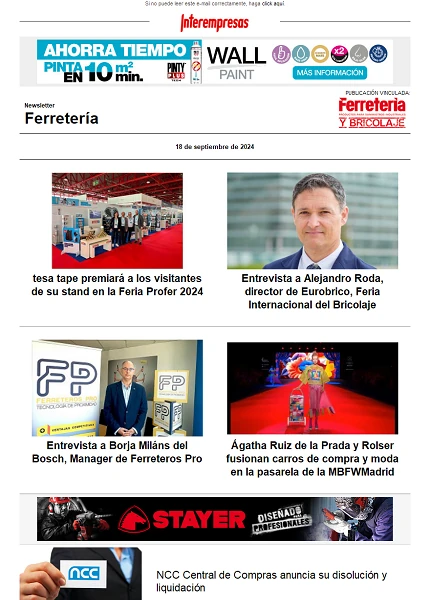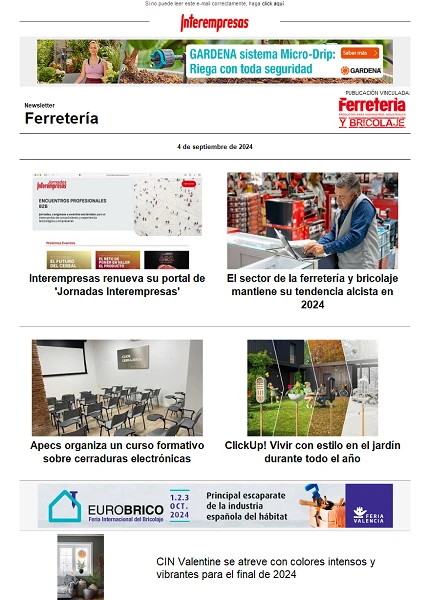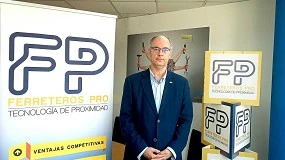Nuevas normas del calzado para uso profesional

Por otro lado, en ese mismo mes de febrero se aprobó la norma EN ISO 20347:2012 - Equipo de protección personal. Calzado de trabajo (ISO 20347:2012), que sustituye a la norma EN ISO 20347:2004 y su enmienda de 2007. Aunque esta nueva norma aún no se ha publicado en el DOUE, está previsto que lo haga en la próxima edición del listado de normas armonizadas para la Directiva 89/686/CEE.
La norma EN ISO 20346:2004 para calzado de protección y su enmienda de 2007 permanece sin cambios.
En este documento se darán los aspectos más relevantes que introducen estas nuevas normas en relación con sus predecesoras.
Variación de las normativas

Algunas nuevas definiciones
Se introduce la definición para un nuevo tipo de calzado. Hablamos del calzado híbrido, una variación del calzado clase II (todo polimérico o todo de caucho) que incorpora otro material el cual extiende el corte.
Variaciones en los requisitos básicos del calzado
Los requisitos de resistencia al deslizamiento que antes se especificaban en el EN ISO 20345:2004/A1:2007 y en EN ISO 20347:2004/A1:2007, se incorporan ahora al cuerpo de la norma.
Se trata de un cambio de forma, no de fondo, ya que los requisitos no sufren alteración. Los requisitos de resistencia al deslizamiento establecen que el calzado debe alcanzar unos valores para los mínimos para los coeficientes de fricción, en una de las tres situaciones que se exponen en la Tabla 1. Cada una de estos supuestos lleva asociado un marcado determinado que debe reflejarse en el calzado.
Requisitos para calzado resistente al deslizamiento (debe cumplirse una de las tres)
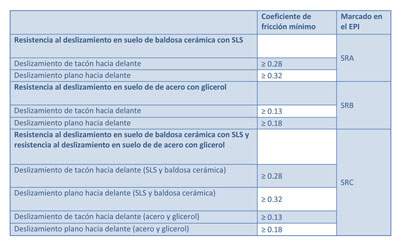
Por otro lado, la resistencia a los hidrocarburos que en la versión de 2004 y su enmienda de 2007 era un requisito obligatorio para el calzado de seguridad según EN ISO 20345, pasa ser un requisito opcional en la versión de 2011, por lo que el calzado que alegue cumplimiento con esta condición deberá llevar marcado el símbolo FO.
Cambios en el contenido en Cromo VI
Los materiales de piel que se incorporen en el calzado, como en los cortes de piel, lengüetas o plantillas de piel, deben presentar un contenido de Cromo VI que no excederá los 3,0 mg/kg cuando se ensaye según el método de la norma ISO 17075.
El Óxido de Cromo (VI) (CrO3) es una sustancia es corrosiva para los ojos, la piel y el tracto respiratorio. Uno de sus usos se da en la industria de curtido de pieles, donde se ha constatado la relación entre la exposición al Cr (VI) de estos trabajadores y la incidencia del cáncer.
Las vías de exposición más habituales son cutánea, nasal y digestiva. El contacto prolongado o repetido puede producir sensibilización de la piel. Mientras que la exposición prolongada o repetida por inhalación puede originar asma. La sustancia puede afectar al tracto respiratorio, riñón, dando lugar a perforación del septo nasal, alteración renal.
Esta sustancia es carcinógena para los seres humanos. Puede causar daño genético hereditario en células germinales humanas. (2)
Esta modificación del requisito es en realidad un cambio en el método analítico con el que se determina el contenido de Cr VI en las partes del calzado elaboradas en piel. En la norma EN ISO 20345:2004 la determinación se hace con el método que se da en EN ISO 20344:2004 y el contenido en Cr VI no debía ser detectable cuando se utilizaba el método analítico que se detallaba en esa norma.
Cambios en los requisitos adicionales del calzado de seguridad
En la versión definitiva de la norma, han desaparecido las suelas de alta resistencia eléctrica como requisito adicional. Este requisito estaba presente en los borradores generados durante el proceso de elaboración de la norma. Por lo que los requisitos opcionales relativos a las propiedades eléctricas del calzado se ciñen al calzado aislante de la electricidad, el calzado antiestático y el calzado conductor.
Por otro lado, el símbolo de marcado para el calzado aislante de la electricidad que se indicaba en EN ISO 20345:2005 y que se representaba mediante la letra “I”, ha pasado a armonizarse con la denominación que se utiliza para todos los equipos destinados a trabajos en tensión, y que en el caso del calzado se especifica en la norma EN 50321 (doble triángulo con la clase 0 o 00, según corresponda).
Por lo tanto, los requisitos aplicables al calzado de seguridad según EN ISO 20345:2011 y EN ISO 20347:2012 son los que aparecen en la Tabla 2.
Tabla 2 Requisitos adicionales para el calzado de seguridad y de trabajo
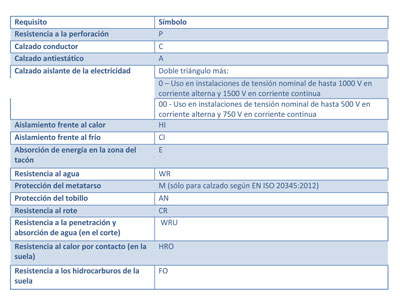
Plantillas resistentes a la perforación
Para las plantillas resistentes a la perforación no metálicas, se ha introducido una modificación según la cual, cuando se ensaye la plantilla usando una fuerza de al menos 1100 N, la punta de la aguja de ensayo no penetrará a través de la muestra de ensayo. Para alcanzar el resultado “pasa”, la punta de la aguja de ensayo no sobresaldrá la muestra de ensayo. Esto se comprobará por ensayo visual, cinematográfico o detección eléctrica.
Por otro lado, las plantillas anti-perforación metálicas debido al nuevo ensayo de resistencia a la corrosión que obligará a que las nuevas plantillas sean de acero sin estaño
Debido a las dificultades a las que se enfrenta la industria para adaptarse a este cambio en particular, la federación francesa de calzado y SYNAMAP han solicitado a la ESF que presente ante el comité permanente sobre la 89/686/CEE una petición de que el periodo de transición se prolongue de forma que el calzado según la versión de 2007 pueda seguir produciéndose hasta el 31-12-13 y se alargue su comercialización hasta el 31-12-14. Estos periodos de transición permitirían una adaptación de los productos de 2007 razonable, teniendo en cuenta que estos no ofrecen problemas de seguridad.
Cambios relevantes en el marcado
Como ya se comentó al principio de este artículo, las nuevas versiones de las normas, contemplan un tipo de calzado que se denomina calzado híbrido. En este sentido se ha añadido un nuevo símbolo de marcado adicional para la categoría de calzado híbrido. El símbolo SBH, para el calzado según EN ISO 20345:2011 y OBH para el calzado según EN ISO 20347:2012 indican que el calzado cumple con los requisitos básicos que se exigen en cada una de las normas.
Adicionalmente, se ha introducido una exigencia adicional al marcado, para que en caso de que el calzado presente cualquier marcado adicional relacionado con la seguridad, el fabricante deberá proporcionar pruebas que apoyen la indicación y se dará una explicación en la información para el fabricante. Por ejemplo, si aparece un marcado “resistente al ácido”, al menos la suela habrá sido ensayada según EN 13832-1 (degradación) y se cumplirán los requisitos de EN 13832-3:2006, 6.2.2.6.
Un periodo de coexistencia mayor
En un principio, la Comisión Europea había fijado un periodo de transición entre las nuevas normas y la versión del 2004 que acaba el 30 de Junio. Durante este periodo ambas versiones de las normas tendrían presunción de conformidad con los Requisitos Esenciales de Salud y Seguridad de la Directiva 89/686/CEE. Finalizado este periodo, la versión de 2004 perdería presunción de conformidad y entre otras cosas, todas las inspecciones de mercado serían llevadas a cabo según los criterios de la nueva versión de la norma.
Cuando ya la norma estaba aprobada y el periodo de transición estaba casi a punto de finalizar, se detectó un problema: los fabricantes de plantillas anti-perforación no metálicas que suministran a la industria del calzado no tenían tiempo para cambiar sus medios de producción para satisfacer toda la demanda del mercado según los nuevos requisitos.
A su vez, existía un problema similar con las plantillas anti-perforación metálicas debido al nuevo ensayo de resistencia a la corrosión que obligará a que las nuevas plantillas sean de acero sin estaño.
Asepal, la federación francesa de calzado y el sindicato francés Synamap solicitaron a través de la European Safety Federation (ESF) la presentación ante el comité permanente sobre la 89/686/CEE de una petición para que el periodo de transición se prolongase de forma que el calzado según las versiones antiguas pueda seguir produciéndose hasta el 31-12-13 y se alargue su comercialización hasta el 31-12-14. Estos periodos de transición permitirían una adaptación de los productos de 2007 razonable, teniendo en cuenta que las versiones antiguas de las normas no ofrecen problemas de seguridad.
Finalmente la decisión de la Comisión Europea sobre ampliar el periodo de transición de las nuevas versiones de las normas de calzado ha sido la de prolongar la presunción de conformidad 12 meses en lugar de los 18 meses que se pedía. Así, por tanto, la nueva fecha límite establecida para que el calzado que se ponga en el mercado cumpla con la nueva versión de la norma es el 30/06/2013.
Bibliografía
- Comisión Europea. Diario Oficial de la Unión Europea. EUR-Lex.europa.eu. [Online] Febrero 16, 2012. http://eur-lex.europa.eu/LexUriServ/LexUriServ.do?uri=OJ:C:2012:045:0001:0024:es:PDF. C 45/22.
- Comité Internacional de Expertos del IPCS. Instituto Nacional de Seguridad e Higiene en el Trabajo. Fichas FISQ. [Online] http://www.insht.es/InshtWeb/Contenidos/Documentacion/FichasTecnicas/FISQ/Ficheros/1101a1200/nspn1194.pdf.
- CEN. EN ISO 20345:2011 Equipo de protección individual. Calzado de seguridad (ISO 20345:2011).
- CEN. EN ISO 20347:2012 Equipo de protección personal. Calzado de trabajo (ISO 20347:2012).











